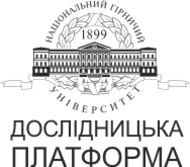№80-4
GIS assessment of copper-zinc deposits under conditions of underground mining
N. Zuievska1, D. Darmostuk2, T. Kosenko1, R. Semchuk1, O. Ovcharov1
1National Technical University of Ukraine “Igor Sikorsky Kyiv Polytechnic Institute”, Kyiv, Ukraine
2Kyiv Regional Employment Center, Kyiv, Ukraine
Coll.res.pap.nat.min.univ. 2025, 80:40–50
Full text (PDF)
https://doi.org/10.33271/crpnmu/80.040
ABSTRACT
The purpose. The main purpose of the study is the identification of natural and technological types and grades of ores, followed by their spatial zoning within the studied deposit.
Methods. The methods of interpolation and approximation of the initial data were used to display the surface relief and distribution of minerals. The choice of method depends on the amount of initial data and its uniformity. For spatial interpolation, the Kriging and radial basis functions methods were used, which allows us to identify general patterns of distribution of the studied parameters. For fast data evaluation with a large number of points, the methods of minimum curvature and triangulation are used.
The results of the study include the creation of a digital model of the deposit, mapping of mineral deposits with analysis of spatial changes, and estimation of copper and zinc reserves. The use of GIS made it possible to visualize the three-dimensional distribution of minerals in the wells, which simplified the analysis and improved its quality.
Originality. The scientific novelty of the study lies in the improvement of the methodology for analyzing geological results at the stage of mining work planning, when the main strategic decisions regarding deposit development in the product quality management mode are made. The methodology allows for a reliable assessment and zoning of ore deposits based on qualitative characteristics.
Practical implementation. The practical significance of the work lies in the use of GIS in the development of a system for comprehensive technical-ecological-economic assessment of the effectiveness of measures for managing the quality of mineral raw materials in complex conditions, where reserves of valuable mineral raw materials are concentrated in thin and very thin ore veins. The choice of technology for managing the quality of mineral raw materials is based on the results of the assessment of the qualitative characteristics of minerals, the identification of natural types of ores in the ore massif based on geological information, the substantiation of the characteristics of technological types of ores, and their zoning in the underground space using geoinformation modeling.
Keywords: GIS, deposit, zinc, copper, geological surveys, modeling, quality management, ore, wells, concentration, technology, efficiency, geological cross-section, geodetic monitoring.
References
1. Mudd, G.M., Jowitt, S.M., & Werner, T.T. (2017). The world's lead-zinc mineral resources: Scarcity,data, issues and opportunities. Ore Geology Reviews, 80, 1160–1190. https://doi.org/10.1016/j.oregeorev.2016.08.010
2. Rostek, L., Pirard, E., & Loibl, A. (2023). The future availability of zinc: Potential contributions from recycling and necessary ones from mining.Resources, Conservation & Recycling Advances, 19, 200166. https://doi.org/10.1016/j.rcradv.2023.200166
3. Boszczuk, P., Cheng, L.Z., Hammouche, H., Roy, P., Lacroix, S., & Cheilletz, A. (2011). A 3D gravity data interpretation of the Matagami mining camp, Abitibi Subprovince, Superior Province, Québec, Canada: Application to VMS deposit exploration. Journal of Applied Geophysics, 75, 77–86. https://doi.org/10.1016/j.jappgeo.2011.06.031
4. Cornelious, S.E., & Araque, J.D. (2009). Historical perspective and new developments regarding conversion coatings and seals for zinc deposits. Metal Finishing, 107, 22–25. https://doi.org/10.1016/S0026-0576(09)00017-8
5. Atlin, C.,& Gibson, R. (2017). Lasting regional gains from non-renewable resource extraction: The role of sustainability-based cumulative effects assessment and regional planning for mining development in Canada. The Extractive Industries and Society, 4, 36–52. https://doi.org/10.1016/j.exis.2017.01.005
6. Sobolevskyi, R., Zuievska, N., Korobiichuk, V., Tolkach, O., & Kotenko, V. (2020). Cluster analysis of fracturing in the deposits of decorative stone for the optimization of the process of quality control of block raw material.Eastern-European Journal of Enterprise Technologies, 5, 21–29. https://doi.org/10.15587/1729-4061.2016.80652
7. Zuievska, N., Shaidetska, L., Kosenko, T., & Matviichuk, I. (2024). Prognostication of zones with variable physical and mechanical characteristics of soil massifs. Collection of Research Papers of the National Mining University, 77, 118–125. https://doi.org/10.33271/crpnmu/77.118
8. Ghorbani, Z., Gholizadeh, F., Casali, J., Hao, C., Cavallin, H.E., Loon, L.L.V., & Banerjee, N.R. (2022). Application of multivariate data analysis to biogeochemical exploration at the Twin Lakes Deposit, Monument Bay Gold Project, Manitoba, Canada. Chemical Geology, 593, 120739. https://doi.org/10.1016/j.chemgeo.2022.120739
9. Peck, W.H., Rathkopf, C.A., Mathur, R.D., & Matt, P.D. (2022). Stable isotope (C, O, S, and Zn) geochemistry of marble-hosted exhalative zinc deposits in the Central Metasedimentary Belt, Grenville Province, Canada: Insights into ore deposition and tectonic setting. Ore Geology Reviews, 148, 105057. https://doi.org/10.1016/j.oregeorev.2022.105057
10. Slezak, P.R., Olivo, G.R., Oliveira, G.D., & Dardenne, M.A. (2014). Geology, mineralogy, and geochemistry of the Vazante Northern Extension zinc silicate deposit, Minas Gerais, Brazil. Ore Geology Reviews, 56, 234–257. https://doi.org/10.1016/j.oregeorev.2013.06.014




